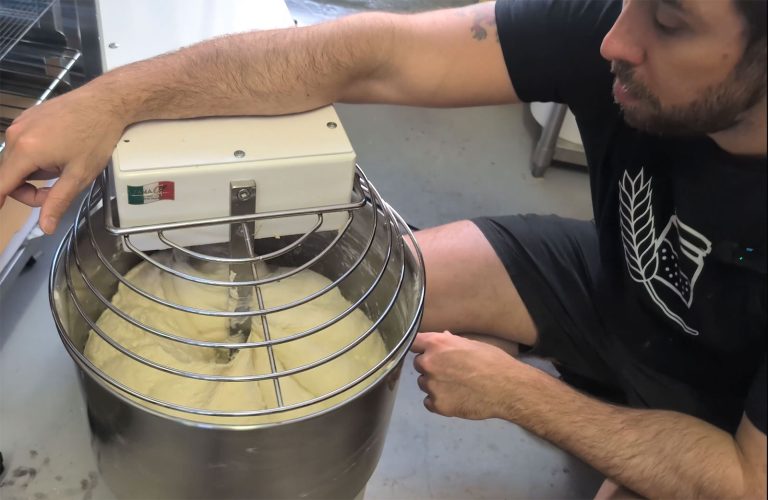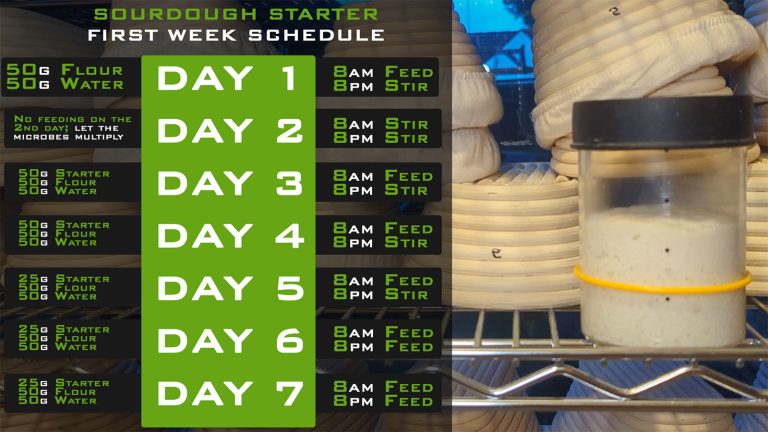Beginner-Friendly Sourdough Baguettes (Step-by-Step Recipe)
Sourdough baguettes are one of the most rewarding breads you can bake. With the right approach, any home baker can achieve crisp golden crusts, airy crumbs, and beautiful shape.
This recipe is designed to be beginner-friendly with a manageable hydration level that makes the dough easier to work with and shape. Once you’ve mastered this version, you’ll have a solid foundation for tackling higher hydration baguettes in the future.
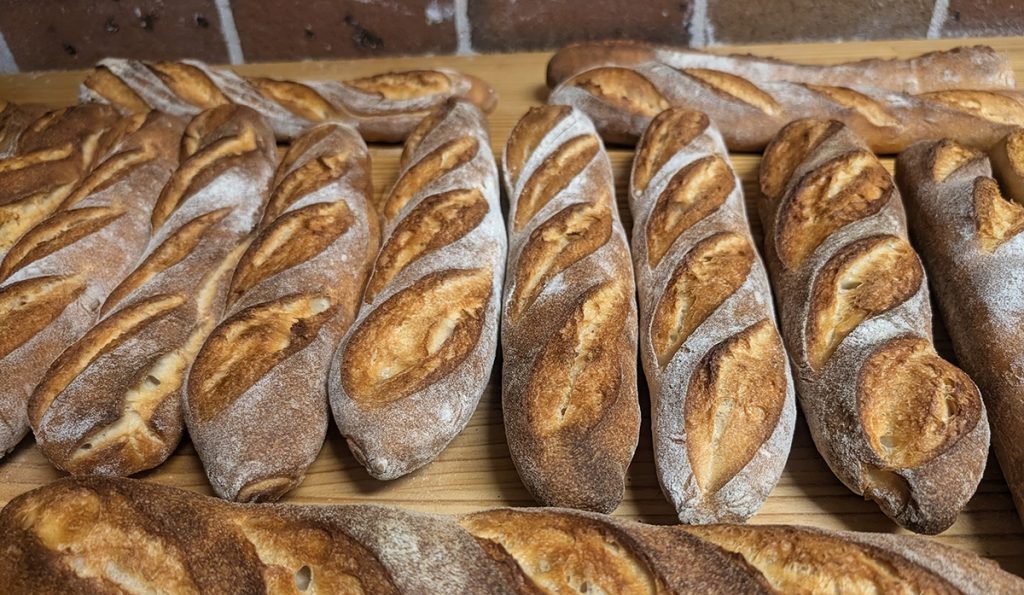
In this guide, I’ll walk you through every step — from mixing and fermentation to shaping and baking — with a few techniques you can try along the way.
👉 Want to see the full process in action? Watch my complete sourdough baguette tutorial on YouTube.
👇 Download the Sourdough Baguette production sheet at the bottom of this page.
Key Points to Remember
- Dough Temperature (25°C / 77°F): Consistency is everything. Keeping your dough at this temperature ensures predictable fermentation and reliable results.
- Don’t Overmix: Too much mixing can make dough sticky and weak. Aim to develop about 80% of the dough’s strength in your spiral or stand mixer, then finish with stretch and folds. This prevents over-mixing and keeps the dough easy to handle.
- Rice Flour for Shaping: Using a combination of rice flour and regular flour prevents your dough from sticking while shaping and proofing. Because rice flour has no gluten, it doesn’t absorb water from the dough, making it ideal for handling delicate sourdough loaves.
Recipe
This recipe makes baguettes weighing 320g each.
Ingredients (per Baguette – 320g)
Flour: 183 g (organic white flour, 12.5% protein recommended)
Water (75%): 137 g/ml
Sourdough Starter (20%): 36.6 g
Salt (2%): 3.7 g
15 Baguettes – as in my YouTube video
Flour: 2,745 g
Water (75%): 2,058 g/ml
Sourdough Starter (20%): 549 g
Salt (2%): 55 g
Method
Step 1 – Autolyse
Combine the flour with most of the water (reserve a little to mix with the salt later). Mix on the lowest speed of your mixer until no dry flour remains. Cover and let rest for 30–60 minutes. This step hydrates the flour and develops extensibility.
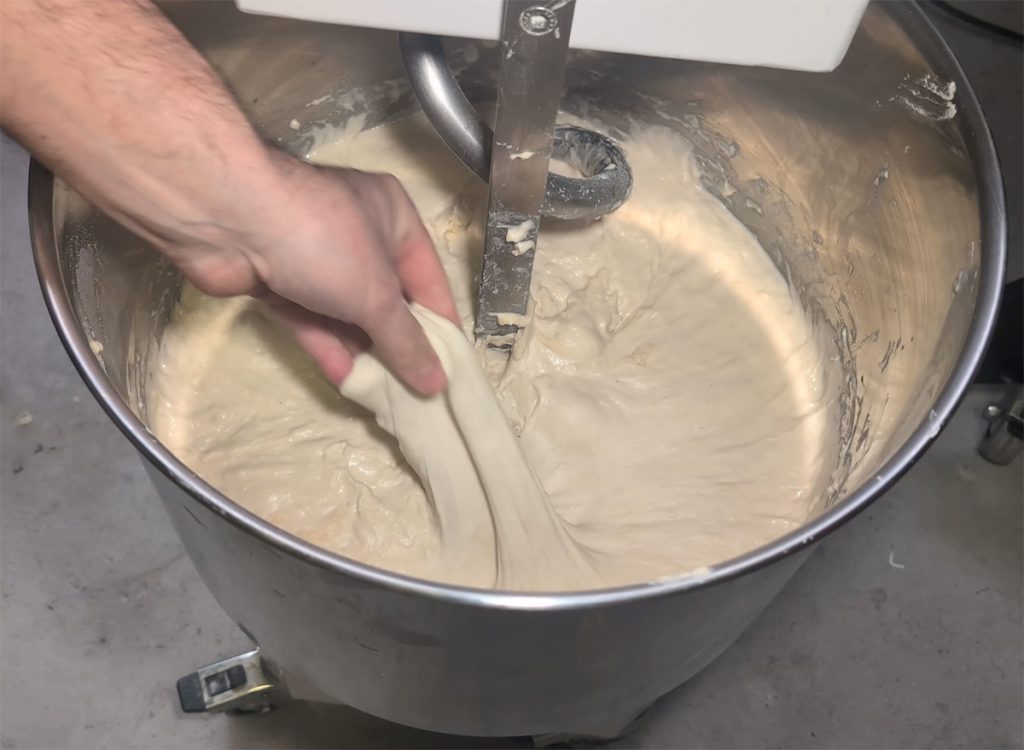
Step 2 – Incorporating Starter & Salt
Add your active sourdough starter and mix on low for about 3 minutes.
Dissolve the salt in the remaining water and add it gradually, mixing until incorporated. Increase to medium speed and mix for 1–2 minutes, just until the dough begins to pull away from the bowl.
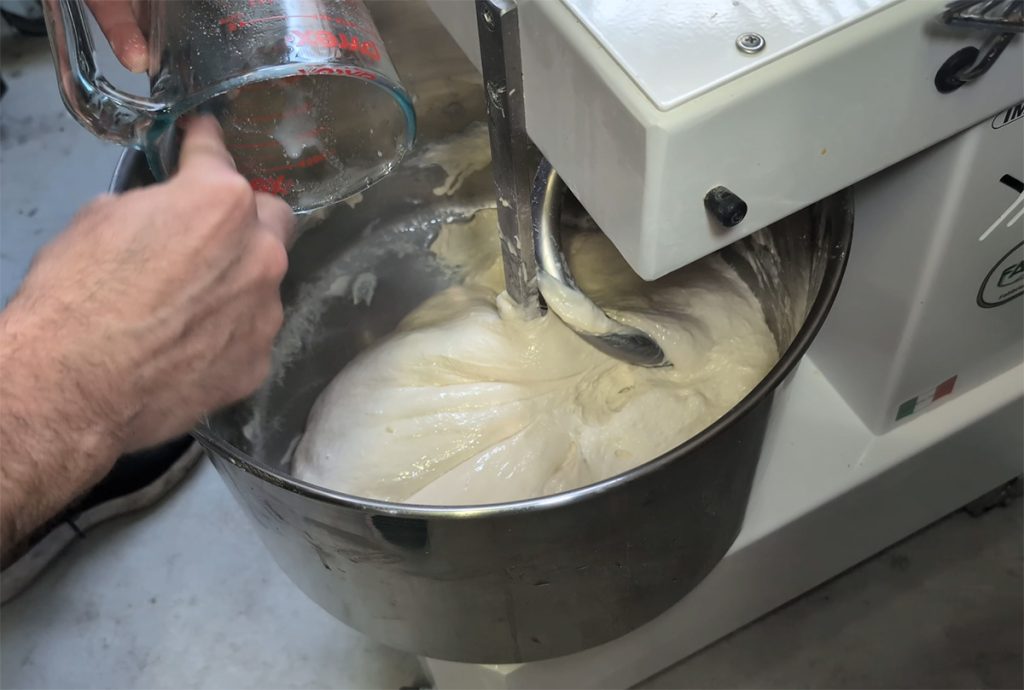
Step 3 – Bulk Fermentation
Transfer the dough to a lightly oiled tub. Perform a quick stretch and fold immediately.
Ferment at 25°C (77°F) for about 2 hours, performing 4 sets of stretch and folds at 30-minute intervals.
After the last fold, place the dough in the fridge for a cold fermentation of 12–36 hours.
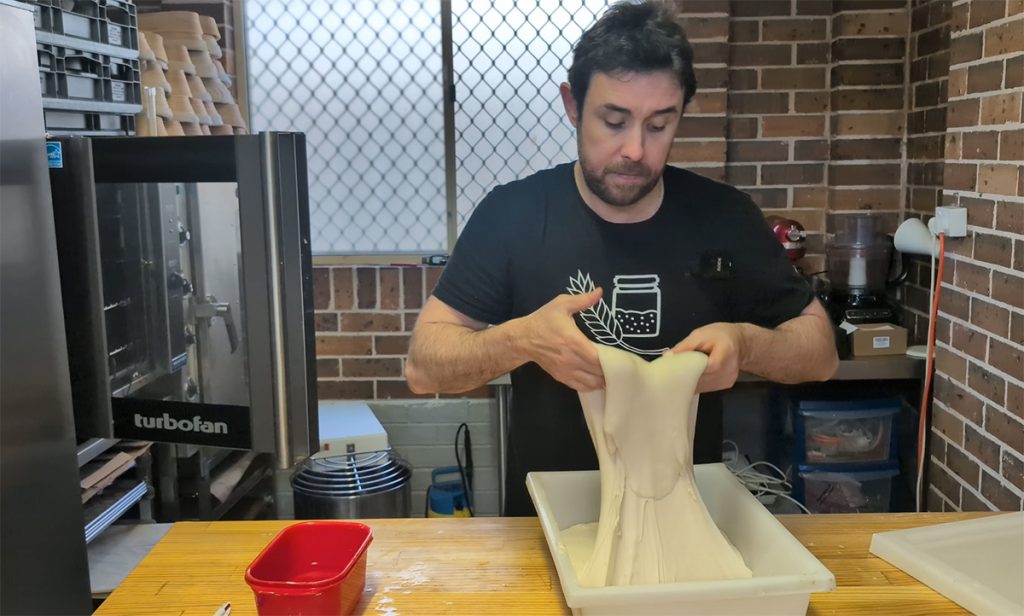
Step 4 – Shaping & Final Proof
Bring the dough to room temperature for 45–60 minutes.
Divide into 320 g pieces, roll lightly, and let them rest for 30–40 minutes.
Prepare a flour mix (⅔ rice flour, ⅓ regular flour).
Shape each baguette by gently stretching into a rectangle, folding the top third down, the bottom third up, then rolling into length. Coat one side with the flour mix and place on a couche or tray.
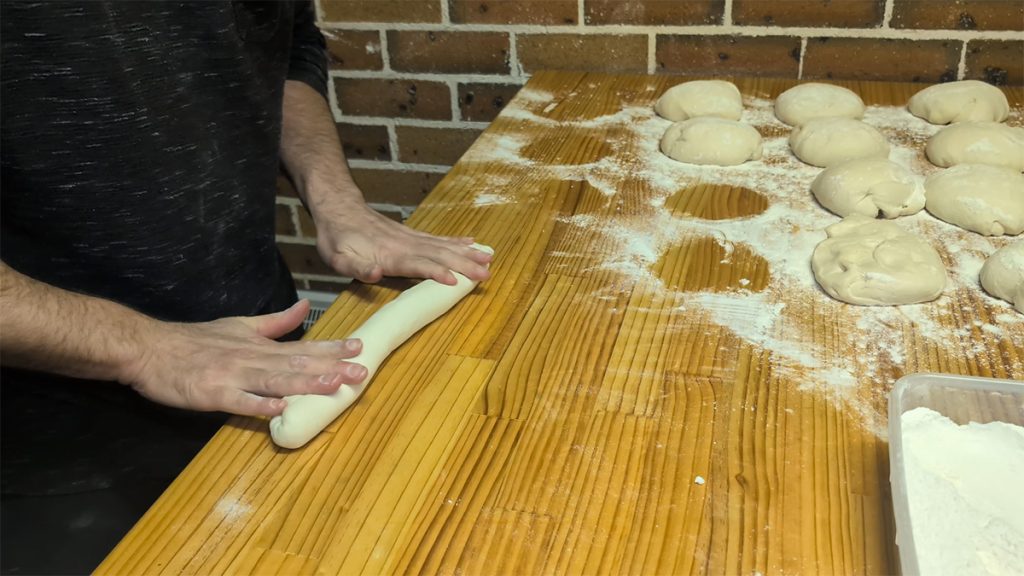
Proof for 1–2 hours, until the dough passes the poke test (indentation springs back slowly).
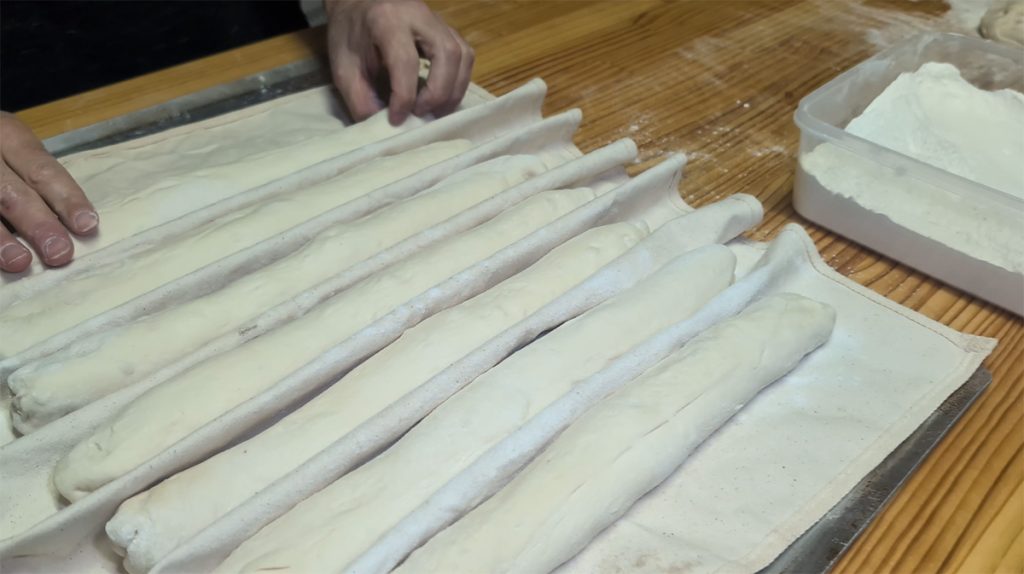
Step 5 – Baking
Preheat oven to 230°C (446°F) with a baking stone or tray.
Transfer baguettes, score with a sharp blade, and bake with steam for 20 minutes.
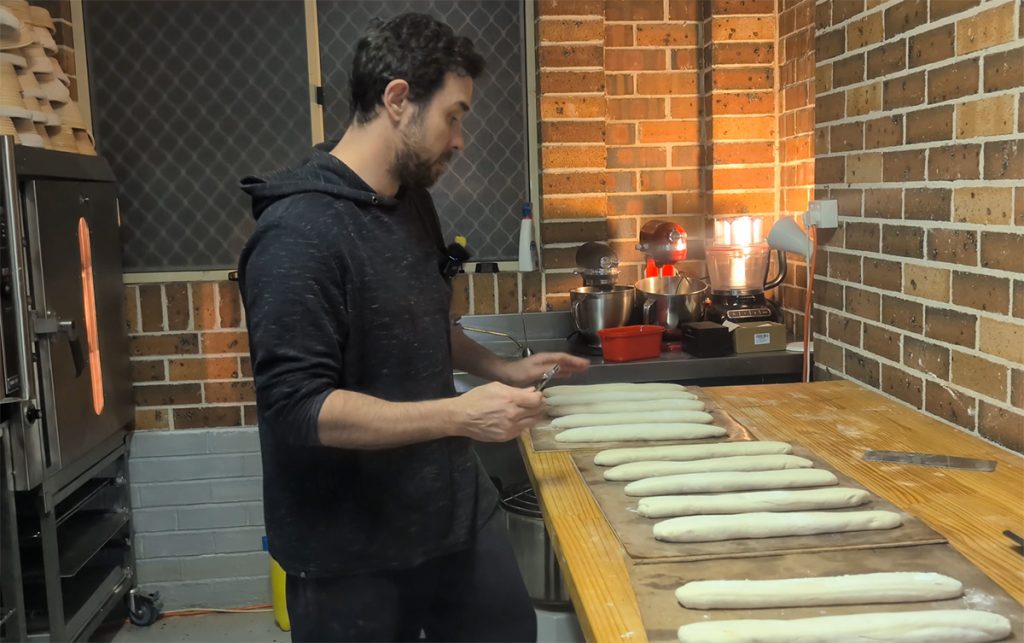
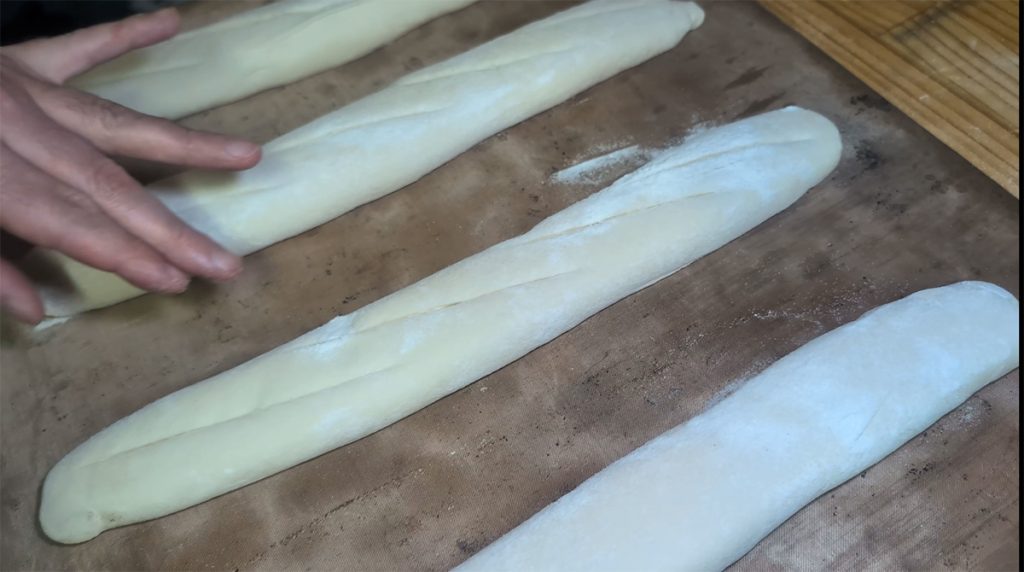
Release steam and bake for another 5–8 minutes until golden.
Cool on a wire rack before serving.

Enjoy Your Homemade Baguettes!
With practice, you’ll find shaping easier and results more consistent. Once comfortable, experiment with slightly higher hydration for an even more open crumb.
FAQ
Can I use all-purpose flour instead of bread flour?
You can, but a higher protein flour (around 12.5%) will give you better structure and oven spring.
How do I know if my baguettes are fully proofed?
The poke test works well — press gently with a floured finger. If the indentation bounces back slowly but doesn’t fill completely, they’re ready to bake.
Do I have to cold ferment overnight?
No, but a cold ferment (12–36 hours) improves flavor, dough handling, and crust color.
👇 Check out the full step-by-step video tutorial on YouTube.
📥 Download the Sourdough Baguette Production Sheet
Want to try it out? Grab your copy below and use it for your next bake day—whether you’re baking one loaf or prepping for a full batch.
- 👉 Download the Excel Version – Great for scaling, editing, and digital notes.
- 📄 Download the Printable PDF – Easy to print and use by hand, but not editable.
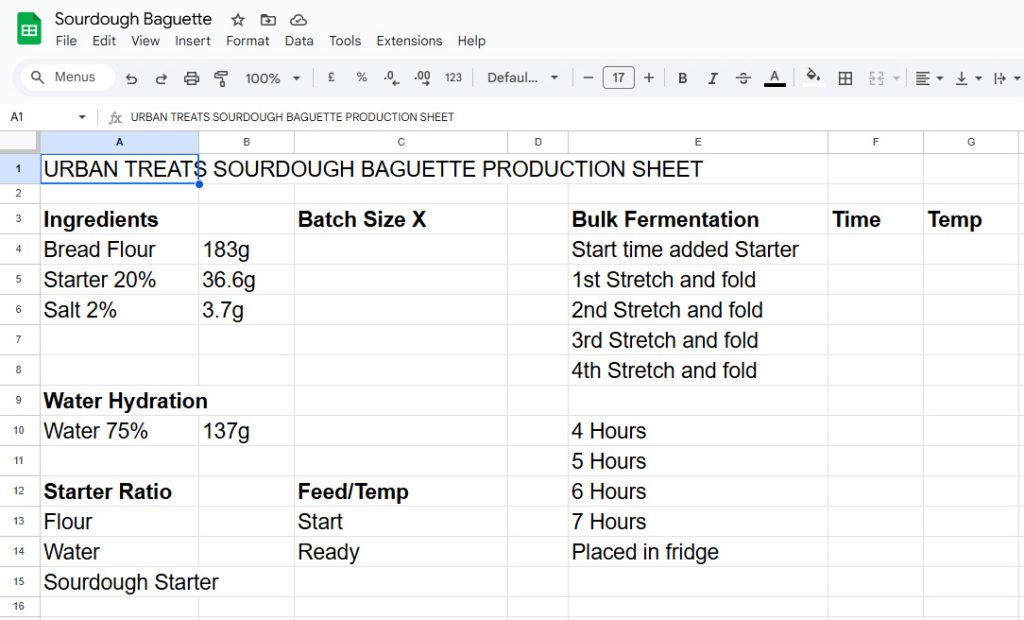
🧑🍳 Join the Bake Club!
Tried it out? I’d love to see how you’re using it!
Tag me on Instagram @urbantreats_sydney or join the Urban Treats Facebook Group to share your notes and connect with other bakers.
Let’s keep baking better bread—one well-timed fold at a time.

